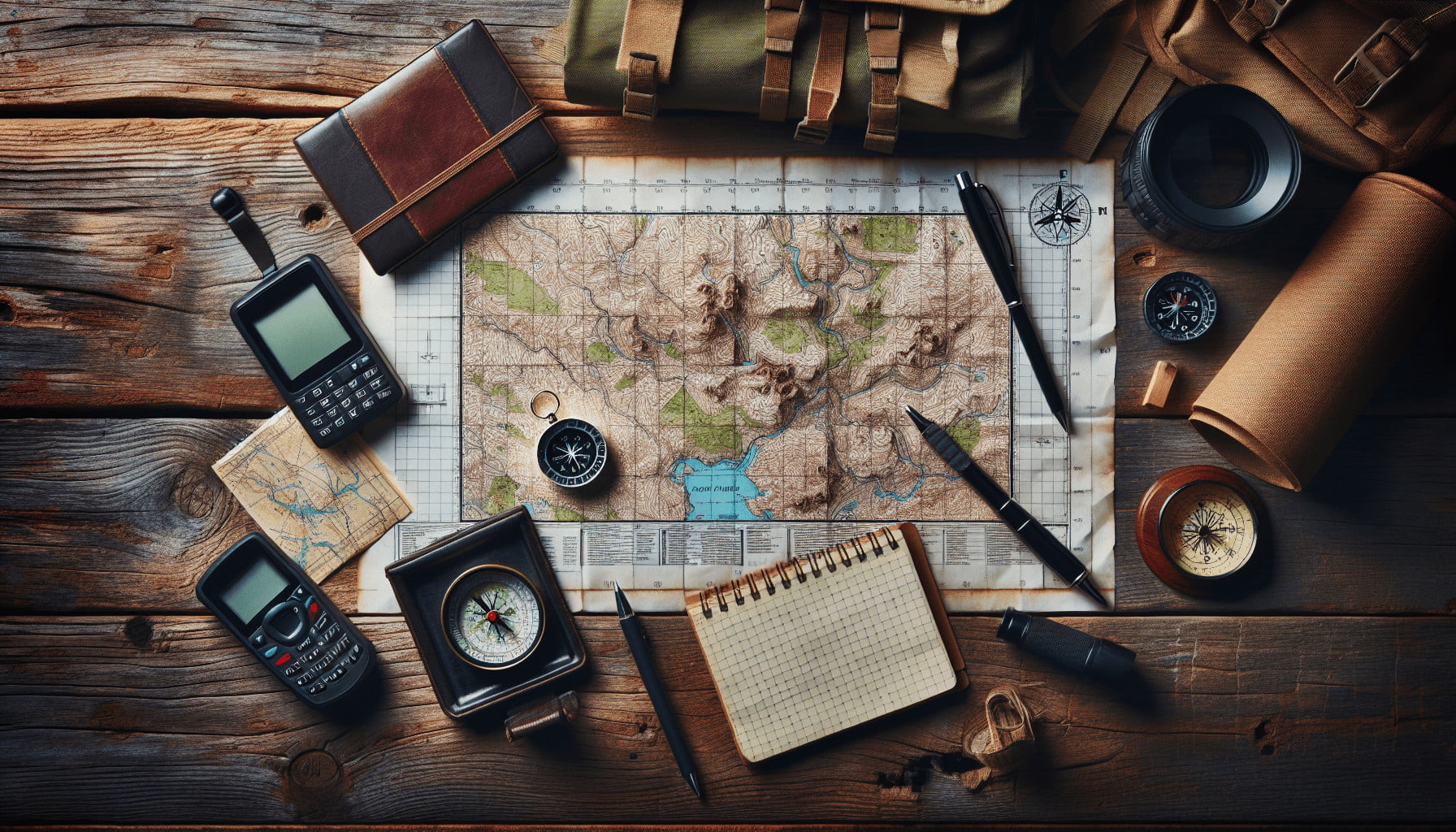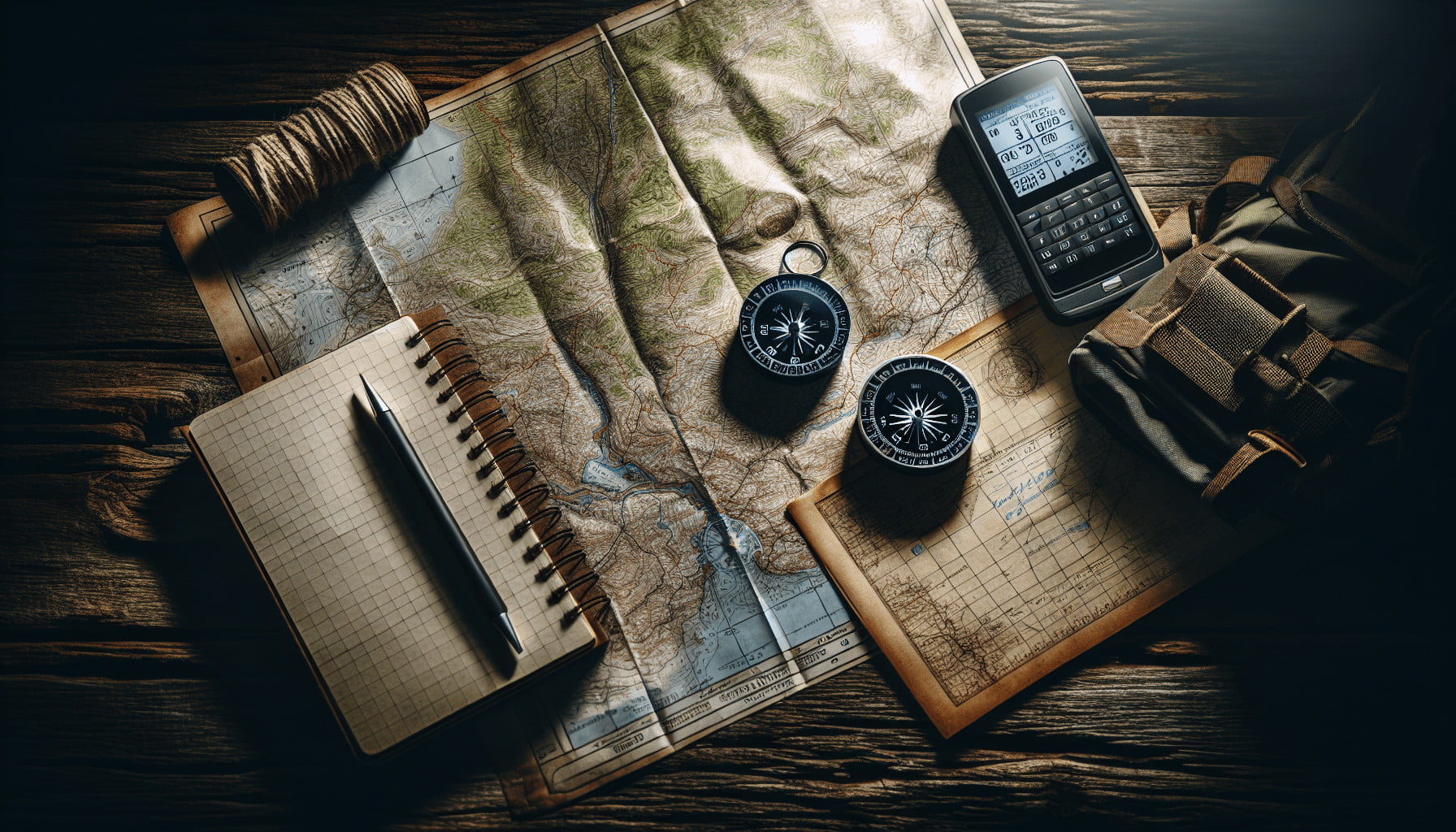Embarking on a journey into the wilderness can be both exhilarating and daunting. “The Importance of Trip Planning for Wilderness Navigation” delves into the critical role that meticulous planning plays in ensuring both your safety and enjoyment during outdoor adventures. By understanding key elements such as route mapping, weather forecasting, and emergency preparedness, you can navigate the wild with confidence. The article explores various planning methods, offering expert insights and practical tips to help you avoid common pitfalls and make the most of your expedition.
Whether you’re a seasoned explorer or a novice hiker, mastering these essential skills can transform your outdoor experience, making every trail a path to discovery and adventure. Have you ever wondered how explorers and adventurers successfully navigate the vast, unpredictable wilderness?
Overview
In an era marked by technological conveniences, the idea of wilderness navigation might seem archaic to some. However, for outdoor enthusiasts, adventurers, and survivalists, the skill remains invaluable. The importance of trip planning for wilderness navigation cannot be overemphasized. It ensures safety, maximizes enjoyment, and helps you reach your intended destination. Proper planning can make the difference between an exhilarating adventure and a potentially hazardous ordeal.

Why Develop a Skillset for Wilderness Navigation?
Developing a skill for wilderness navigation is both a challenging and rewarding venture. Unlike urban navigation, where signposts and GPS systems constantly guide you, the wilderness demands a higher level of self-reliance and acumen. By meticulously planning your trip, you significantly reduce the chances of getting lost or encountering perilous situations.
Primary Argument and Keyword Integration
The main argument here is the essential role that trip planning plays in effective wilderness navigation. Keywords like “wilderness navigation” and “trip planning” will be pivotal throughout this discussion. From mapping your route and understanding the terrain to packing the necessary gear and supplies, trip planning is an indispensable skill for anyone venturing into uncharted territories.
Defining Complex Terms
For those new to the concept, wilderness navigation might seem like a daunting term. Simply put, it involves the use of maps, compass, GPS devices, and natural landmarks to find your way through remote and rugged terrains. Related keywords like “topographic maps,” “compass readings,” and “natural landmarks” will help demystify these concepts.
Breaking Down the Basics of Trip Planning
Let’s delve deeper into the various aspects and questions surrounding effective trip planning and how it contributes to successful wilderness navigation.
Mapping Your Route
One of the first steps in trip planning is to map your route meticulously. This involves:
- Choosing Your Destination: Where do you want to go? Understanding your end goal can help you plan the journey effectively.
- Topographic Maps: These are indispensable tools that show the terrain’s elevation and landscape features. Familiarize yourself with reading them.
- Waypoints and Landmarks: Identify key points along your route, such as rivers, mountain peaks, or valleys, to guide you.
Gear and Supplies
Your gear and supplies can make or break your adventure. Essential items include:
- Navigation Tools: Compass, GPS, altimeter, and maps.
- Survival Gear: First-aid kit, multi-tool, fire starters, and whistle.
- Appropriate Clothing: Layered clothing to adapt to changing weather conditions.
- Food and Water: Sufficient provisions considering the length and difficulty of your trip.
Training and Preparation
Actual wilderness navigation demands practice and preparation. Basic survival training, first-aid knowledge, and navigation exercises can enhance your skills and readiness.
Staying Flexible
Even with meticulous planning, nature can be unpredictable. Weather conditions, physical limitations, or unforeseen obstacles can necessitate a change in plans. Be prepared to adjust your route or strategy.
Analyzing Different Approaches to Wilderness Navigation
Just like any art or science, there are various schools of thought regarding the most effective way to navigate wilderness areas. Let’s dissect a few of these approaches and their outcomes.
Traditional Map and Compass
This approach relies on age-old tools like paper maps and a magnetic compass. Its success hinges on your ability to read and interpret topographic maps and take accurate compass bearings.
- Pros: No dependency on electronic devices, which can fail.
- Cons: Requires skill and continuous practice.
GPS Devices
Modern technology has introduced GPS devices that can pinpoint your location with remarkable accuracy using satellite signals.
- Pros: Easy to use and highly accurate.
- Cons: Dependencies on batteries and satellite signals; potential for failure in densely wooded or deep canyon areas.
Hybrid Approach
A combination of traditional and modern methods offers a balanced approach. For instance, you can primarily rely on GPS but always have a map and compass as a backup.
- Pros: Offers the reliability of traditional methods with the convenience of modern technology.
- Cons: Slightly more gear to carry and the necessity to master both skills.
Evaluating the Impacts of These Approaches
Let’s assess the outcomes of these varying perspectives using evidence-based analysis:
| Approach | Outcome |
|---|---|
| Map and Compass | Provides a reliable baseline navigation method that doesn’t rely on technology. |
| GPS Devices | Offers precise and convenient navigation but can fail due to technical issues. |
| Hybrid Approach | Combines reliability and convenience, often regarded as the safest and most versatile. |
When evaluated, the hybrid approach appears to offer the most balanced benefits, enhancing both reliability and convenience.

Future Trends in Wilderness Navigation
Looking forward, we can expect a range of innovations and trends that will shape the future of wilderness navigation:
Advanced GPS Technology
As technology evolves, GPS devices will likely become even more accurate, reliable, and user-friendly. Enhanced battery life and integration with other smart devices could revolutionize the way adventurers navigate.
Augmented Reality (AR)
Imagine wearing AR glasses that project topographic maps and critical waypoints onto your field of vision. This could make real-time navigation easier and more intuitive.
Sustainable Practices
An increasing emphasis on environmental conservation might influence trip planning practices. Eco-friendly navigation methodologies and minimal-impact principles will be more prevalent.
Broader Implications
The emphasis on trip planning for wilderness navigation has broader implications that extend beyond individual safety and enjoyment. Let’s explore a few of these:
Industry Growth
As more people seek outdoor adventures, the demand for navigation tools, training programs, and related technologies will rise, spurring growth in the outdoor and adventure industries.
Educational Opportunities
With the rising interest, more educational programs will likely emerge, offering courses in wilderness navigation, survival skills, and environmental conservation.
Environmental Awareness
A well-planned trip also means a reduced environmental impact. Educating adventurers about responsible navigation and camping practices helps preserve the wilderness for future generations.
Summary
We’ve explored the undeniable significance of trip planning for wilderness navigation. Proper planning equips you with the knowledge and tools necessary to navigate safely and effectively through the challenging terrains, whether you rely on traditional map and compass methods, modern GPS technology, or a hybrid approach.
By understanding these elements, you can prepare for an adventure that’s both exhilarating and safe. From the choice of route to gears and supplies, every detail counts. The evolving technologies and future trends will continue to shape how we plan and navigate, making the wilderness even more accessible and enjoyable.
So, next time you think about stepping into the wild, you’ll appreciate the thorough planning that turns potential hazards into a well-orchestrated adventure. How meticulously will you plan your next wilderness journey?
